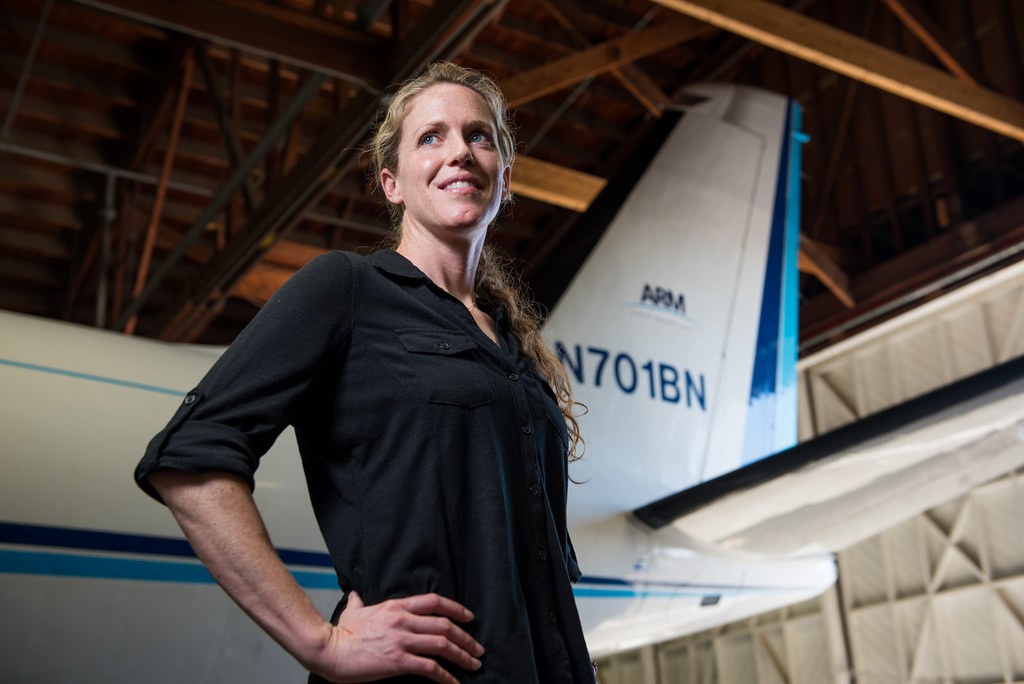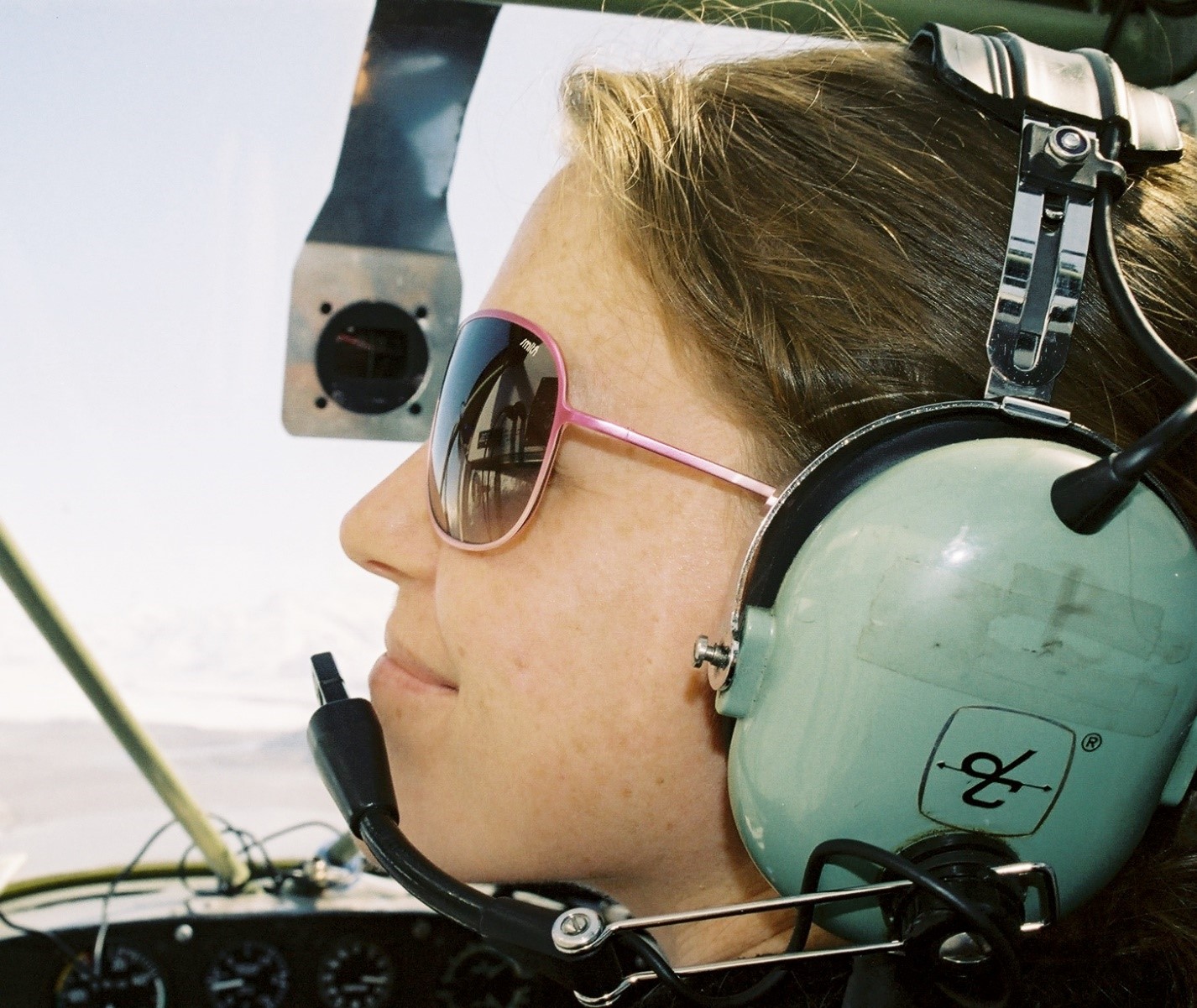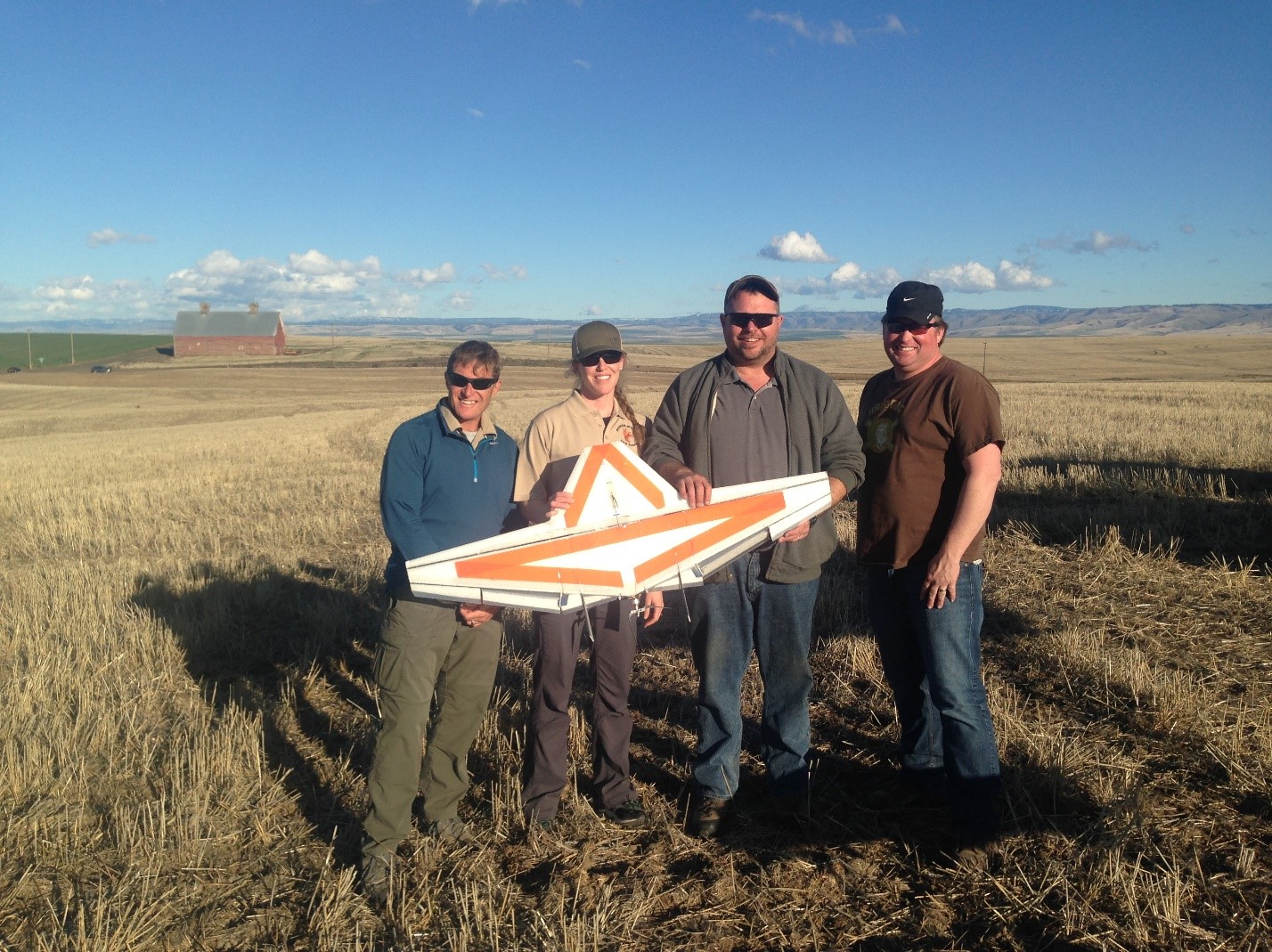A New ARM Pilot Signs Up
Published: 1 December 2018
Combat veteran, pilot, athlete, aircraft entrepreneur and executive Jennifer Armstrong is the first woman to fly ARM’s Gulfstream-159 research aircraft

In early November 2018, Lt. Col. Jennifer Armstrong was in the co-pilot’s seat when the Gulfstream-159 (G-1) research aircraft hummed down a runway in northern Argentina on its first flight for its final campaign.
The G-1, operated by the U.S. Department of Energy (DOE) for atmospheric science missions since 1988, has been the workhorse airborne platform of the Atmospheric Radiation Measurement (ARM) user facility.
The robust 64-foot twin turboprop was beginning its research flights for CACTI—Cloud, Aerosol, and Complex Terrain Interactions, ongoing through the spring of 2019. Led by ARM, an international team of scientists is gathering data about large regional convective storms, including how they form, grow, and organize.
The tallest, widest, most powerful such storms in the world take place where Armstrong and pilot Clayton Eveland were flying in November. (The G-1, however, is staying safely at the periphery of the storms themselves.)
The aircraft, which can host a crew of five scientists, is being retired. A replacement aircraft, as yet unidentified, is expected to be operational by 2021.
“The mission is fantastic,” says Armstrong of the CACTI field campaign. “I’m honored to be a part of it. It’s a good fit for me—not just flying, but flying for a greater cause.”
‘It Looks Fun to Fly’
Armstrong, a 12-year pilot based in Alaska and the first woman to fly the G-1 for ARM, spent two weeks of late-summer orientation and training in Pasco, where the G-1 is housed in a vintage hangar.
Not long before that, a cellphone conversation with her hit pause as F-22 fighter jets roared off the runways behind her, punching into the air like thunderclaps.
The Lockheed Martin stealth fighters are in the background of Armstrong’s world at Joint Base Elmendorf-Richardson in Anchorage, Alaska, where she is a part-time C-17 pilot with the Alaska Air National Guard’s 176th Wing, 144th Airlift Squadron.

Ask her about the C-130H, though. Armstrong flew those turboprop behemoths for 10 years as an instructor pilot with the Guard, including deployments to combat zones—to Afghanistan (2009 and 2011) and then to Kuwait and Iraq (2016).
“It looks fun to fly,” says Armstrong of the G-1. “I can appreciate automation, but I’m also looking forward to getting back to round dials and props.”
Dials and props?
For a year she flew a twin turboprop Beech 1900 for Ace Air Cargo in Alaska, making supply hops to miners, fishermen, and native villages in the roadless bush. (In one case, the local landing strip went uphill. In other places, the winds blew the snow and rain sideways.)
Even in the turboprop-engine C-130, Armstrong says with admiration, “you’re hand-flying most of the time. They call it the ‘pilot’s aircraft.’ It’s like a giant (Piper PA-18) Super Cub.”
The nimble PA-18 is a single-engine monoplane that is dwarfed by the C-130. Not quite 7 feet high, its weight unloaded (930 pounds) is one-third that of the average American sedan.
‘The Whole-Person Concept’
You can say that “a greater cause” has always motivated Armstrong, a behavioral science graduate of the U.S. Air Force Academy in 2000. She went on to earn a master’s degree in business administration, fly C-130 rescue missions, found her own company, train for the Olympics, serve in combat, and now, she says, use her piloting skills to serve science—at least part time.
“That’s a constant theme of my life,” says Armstrong, who is aboard the G-1 as a contract pilot. “Accepting new challenges—learning and accepting new challenges.”
Armstrong, a self-described Navy brat, was born in Texas and went on to live successively in Rhode Island, California, Hawaii, Washington state, and Virginia, where she did her last two years of high school.
A competitive swimmer who favored both the 200- and 400-meter individual medley, Armstrong was recruited by the Air Force and Naval academies for Division I competition.
In the Air Force as a cadet undergraduate, she burrowed into her behavioral science studies. Armstrong also completed the required engineering core, along with courses in philosophy—a path to what the Academy calls “the whole-person concept,” she says.
Armstrong swam, did triathlons, and ran college cross country too, building the swimming-running skills that later earned her an invitation to train for the pentathlon for the 2008 Summer Olympics in Beijing.
A few months into her time at the Olympic Training Center in Colorado Springs, however, her pilot training slot materialized.
“Then I had to make a decision,” says Armstrong, who went on to two and a half years of training as a pilot for the Alaska Air National Guard. “It came down to choosing to do something greater than myself.”
‘My Path Was Its Own’

“I chose to fly the skies,” says Armstrong of her decision to take the slot in pilot training over a slot in the Olympics. It was a life choice, however, that took some time to materialize.
“I wasn’t one of those people with my eyes in the sky, longing to be a pilot,” she says of her early years. “My path was its own.”
Right out of the Academy, as a communications and information officer, she was posted to Massachusetts as a recruiter, then to her specialty training, and then to Edwards Air Force Base in California. From there, in 2002, Armstrong deployed as a communications officer to Karshi-Khanabad, Uzbekistan.
That changed everything. On base, Armstrong befriended Air National Guard air crews and first felt the allure of flying big military aircraft.
“I decided it was a great fit for me,” she says. By the time her own training came, she was ready with the required Federal Aviation Administration private pilot certification.
Armstrong trained on the T-6 Texan, the T-1 Jayhawk, and finally the C-130 Hercules, finishing as the course’s distinguished graduate.
She flew search-and-rescue missions in Alaska for two years before transitioning to tactical airlift in the same durable, venerable, 98-foot-long aircraft. (The first was made in 1956.)
A lot of Air Guard pilots are part time and have other jobs. In 2011, back from a deployment and past her brief career with Ace Cargo, Armstrong founded her own company, Peak 3 Technical Services, a veteran-owned, woman-owned firm specializing in unmanned aerial systems (UAS).
“It’s the future of aviation,” says Armstrong of ground-piloted aircraft, which can fly uniquely low and slow enough to collect data of all kinds.
“And it really combines my different worlds,” she adds—business, flying, adventure, and the greater good.
Peak 3 was acquired in 2014 by New Hampshire-based ArgenTech Solutions, for which Armstrong opened an Anchorage branch and today is president for commercial services.
It was in her ArgenTech role that Armstrong started working with ARM personnel, testing their DataHawk UAS platform at the Pan-Pacific UAS Test Range Complex in Pendleton, Oregon. (Part of the ArgenTech mission is program and process development, along with complex airspace management and integration.)
In the summer of 2017, she joined ARM researchers putting the DataHawk through its paces at an ARM observation site at Oliktok Point, on Alaska’s North Slope and on the edge of the Beaufort Sea.
Says Armstrong of her latest mission greater than herself—a mission in Argentina, for science. “It’s fascinating—and helpful.”
Keep up with the Atmospheric Observer
Updates on ARM news, events, and opportunities delivered to your inbox
ARM User Profile
ARM welcomes users from all institutions and nations. A free ARM user account is needed to access ARM data.


















